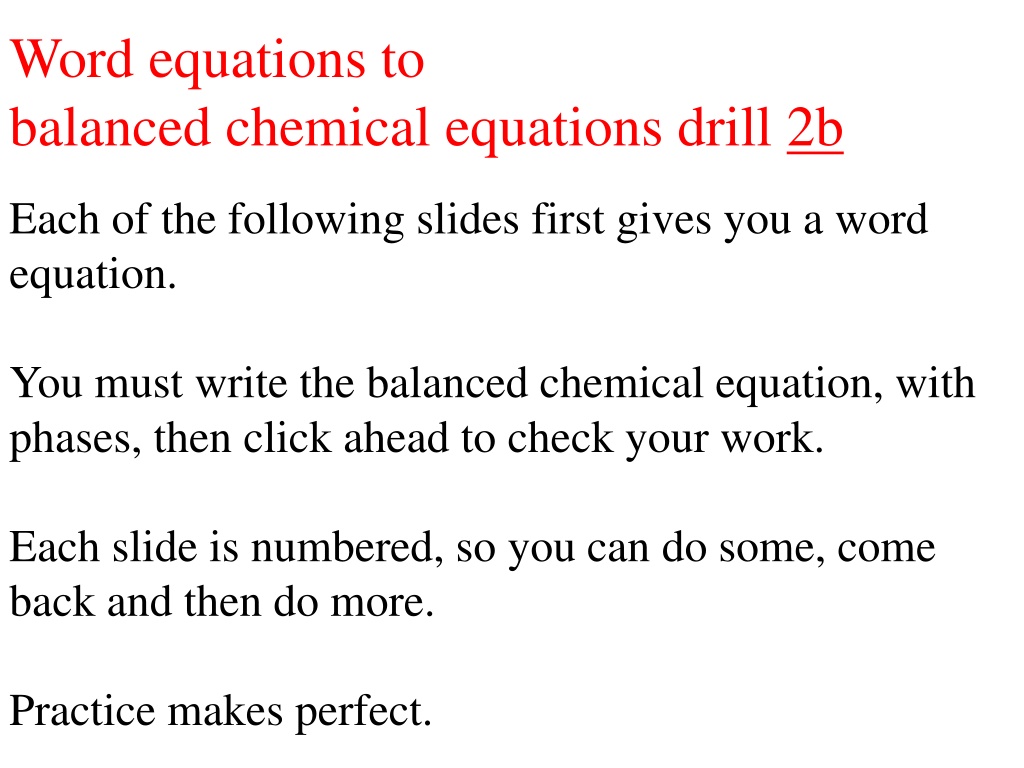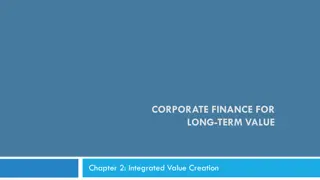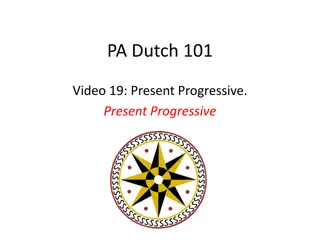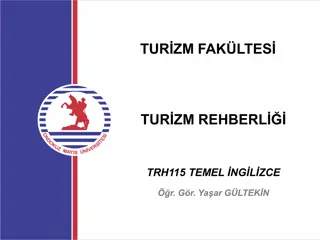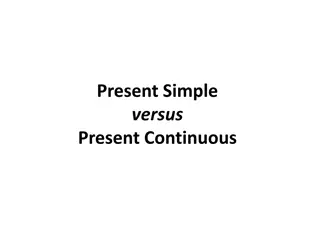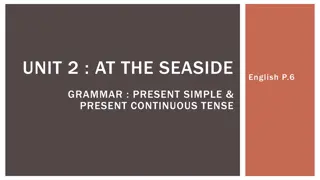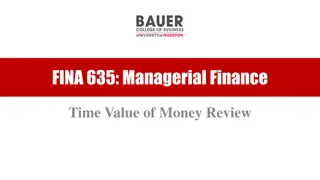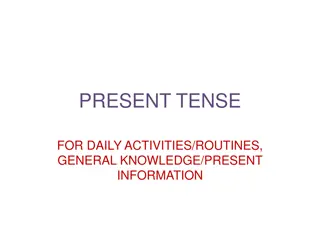Determining Present Value for Future Financial Goals
Learn how to calculate the present value of investments to achieve future financial goals. Understand the concepts with examples and formulas for both single deposit and periodic deposit investments. Practice assignments to strengthen your understanding.
Download Presentation

Please find below an Image/Link to download the presentation.
The content on the website is provided AS IS for your information and personal use only. It may not be sold, licensed, or shared on other websites without obtaining consent from the author.If you encounter any issues during the download, it is possible that the publisher has removed the file from their server.
You are allowed to download the files provided on this website for personal or commercial use, subject to the condition that they are used lawfully. All files are the property of their respective owners.
The content on the website is provided AS IS for your information and personal use only. It may not be sold, licensed, or shared on other websites without obtaining consent from the author.
E N D
Presentation Transcript
Word equations to balanced chemical equations drill 2b Each of the following slides first gives you a word equation. You must write the balanced chemical equation, with phases, then click ahead to check your work. Each slide is numbered, so you can do some, come back and then do more. Practice makes perfect.
SKELETON Aluminum and oxygen form aluminum oxide _Al(S) + _O2(G) _Al2O3(S) Al+3 cation and O-2 anion, criss cross to get the right formula.
Aluminum and oxygen form aluminum oxide _Al(S) + _O2(G) _Al2O3(S) SAY: one aluminum up front in reactants, but two aluminums in the product, put a 2 on the reactant side to start.
Aluminum and oxygen form aluminum oxide 2Al(S) + _O2(G) _Al2O3(S) SAY: two aluminums up front in reactants, and two aluminums in the product, good. SAY: there are 2 oxygens in the reactants, but three in the products. Even 2 and Odd 3, bad. To fix this, we double the odd one, by doubling up Al2O3
Aluminum and oxygen form aluminum oxide 2Al(S) + _O2(G) 2Al2O3(S) SAY: two aluminums up front in reactants, and four aluminums in the product, bad. To fix this we must change the 2Al in the reactants to a four.
Aluminum and oxygen form aluminum oxide 2Al(S) + _O2(G) 2Al2O3(S) SAY: now we ve got 2 Al in reactants, but 4 in products, so change the first 2 into a four, then start again.
Aluminum and oxygen form aluminum oxide 4Al(S) + _O2(G) 2Al2O3(S) 2Al2O3 Means,Al2O3 and another Al2O3 That s 6 oxygens! SAY: 4 Al in reactants, and 4 Al in products (good). Only 2 oxygen in reactants, but SIX in product. HOW DO WE GET 6 OXGYEN in reactants?
Aluminum and oxygen form aluminum oxide 4Al(S) + 3O2(G) 2Al2O3(S) Put a 3 in front of O2, and now it s balanced. It s a 4:3:2 ratio, simple whole numbers, just like our friend John Dalton, and your teacher like. All good.
SKELETON Pentane combusts _C5H10(G) + _O2(G) _CO2(G) + _H2O(G) Combustion is ALWAYS a hydrocarbon in this case the pentane combining with pure oxygen, and then ALWAYS forming carbon dioxide and water.
Pentane combusts _C5H10(G) + _O2(G) 5CO2(G) + _H2O(G) SAY, 5 carbons in pentane, so put a 5 in front of CO2 to keep the carbons balanced.
Pentane combusts _C5H10(G) + _O2(G) 5CO2(G) + 5H2O(G) Next, there are 10 hydrogens in pentane, we need to put a 5 in front of water, to make the hydrogens balance.
Pentane combusts _C5H10(G) + _O2(G) 5CO2(G) + 5H2O(G) Ten in CO2 and then 5 in water. There are always 2 oxygens to start a combustion, how many on the product side? 10 + 5 = 15 (that s ODD and bad) The odd is in the water, so our only hope is to DOUBLE the waters, and start over. Change the 5 to a 10.
Pentane combusts _C5H10(G) + _O2(G) 5CO2(G) + 10H2O(G) Ten in CO2 and then 5 in water. There are always 2 oxygens to start a combustion, how many on the product side? 10 + 5 = 15 (that s ODD and bad) The odd is in the water, so our only hope is to DOUBLE the waters, and start over. Change the 5 to a 10.
Pentane combusts 2C5H10(G) + _O2(G) 5CO2(G) + 10H2O(G) Still 5 carbon in pentane and 5 CO2 (good so far). 10 H in pentane, but now 20 H in the water. Put a 2 in front of pentane to balance the H , start again.
Pentane combusts 2C5H10(G) + _O2(G) 10CO2(G) + 10H2O(G) SAY: 10 C in pentane, only 5 in CO2, fix that five into a 10, then start over again. (yeohhh! Crazy huh?)
Pentane combusts 2C5H10(G) + _O2(G) 10CO2(G) + 10H2O(G) SAY: 10 C in pentane, 10 in CO2, good. 20 H in the pentanes, and 20 H in the water, good! Only 2 oxygens in pure oxygen, but 20 in CO2 and 10 more in the water. (20 + 10 = 30). How do we get 30 in the pure oxygen?
Pentane combusts 2C5H10(G) + 15O2(G) 10CO2(G) + 10H2O(G) Change the pure oxygen to a 15O2 (15 x 2 = 30) now balanced.
SKELETON Rubidium metal is put into calcium nitrate solution _Rb(S) + _Ca(NO3)2 (AQ) _RbNO3(AQ) + _Ca(S) Rubidium makes a Rb+1 cation Nitrate is on table E, NO3-1 anion Calcium makes a Ca+2 cation Nitrate is on table E, NO3-1 anion Criss cross to get proper formula Criss cross to get proper formula
Rubidium metal is put into calcium nitrate solution _Rb(S) + _Ca(NO3)2 (AQ) 2RbNO3(AQ) +_ Ca(S) SAY: 1 Rb in reactants, and 1 Rb in products, so far so good. Then 1 Ca in reactants, and 1 a in products, also good. But two nitrates in the reactant side, so DOUBLE the RbNO3 to double nitrates in the products (then start over).
Rubidium metal is put into calcium nitrate solution 2Rb(S) + _Ca(NO3)2 (AQ) 2RbNO3(AQ) +_ Ca(S) SAY: 1 Rb in reactants, and 2 Rb in products, put a 2 in front of Rb in the reactants.
Rubidium metal is put into calcium nitrate solution 2Rb(S) + _Ca(NO3)2 (AQ) 2RbNO3(AQ) +_ Ca(S) SAY: Rb good 2:2 Ca good at 1:1 nitrates good at 2:2 Balanced! In a 2:1:2:1 ratio John Dalton would be happy, I m happy. You be happy too.
Rubidium metal is put into calcium nitrate solution 2Rb(S) + Ca(NO3)2 (AQ) 2RbNO3(AQ) + Ca(S) Why you might have got this one wrong: Rubidium makes only a +1 cation so forming rubidium nitrate can only be in a 1:1 ratio. The 2 in the calcium nitrate needs to be BALANCED away, not by you sticking a 2 in as in: Rb(NO3)2because it s easier to do. This: Rb(NO3)2 is just not possible.
Cobalt (III) chlorate solution and magnesium chromate solutions are mixed together
SKELETON Cobalt (III) chlorate solution and magnesium chromate solutions are mixed together _Co(ClO3)3 (AQ) + _MgCrO4(AQ) This is the set up for a double replacement reaction, we re starting with 2 AQ solutions. Don t just do this in your head, in our class we will make the switch, and balance the equation. If by chance both products are AQ also, that means it was NO REACTION. For practice balancing, we always go through the motions. You can t decide no reaction until it s balanced and THEN you go to table F to find the solid precipitate, if it s even there.
Cobalt (III) chlorate solution and magnesium chromate solutions are mixed together _Co(ClO3)3 (AQ) + _MgCrO4(AQ) _CoCrO4(?) + _MgClO3(?) Switch the anions around, here the chromate anion starts with the Mg, but ends up with the Co. The chlorate anion starts with Co, but ends up with the Mg. It s a double switch (like a square dance, switch your partners, do si do). FIX IN NEXT STEP! Note, we have NO IDEA YET about the solubility of the products, nor would we look before balancing the equation. Switch, fix, balance, and then table F them.
Cobalt (III) chlorate solution and magnesium chromate solutions are mixed together _Co(ClO3)3 (AQ) + _MgCrO4(AQ) _CoCrO4(?) + _MgClO3(?) We switched em. Now FIX EM! Co+3 and CrO4-2 gets criss-crossed to : Co2(CrO4)3 Mg+2 and ClO3-1 gets criss-crossed to: Mg(ClO3)2 _Co(ClO3)3 (AQ) + _MgCrO4(AQ) Co2(CrO4)3(?) + Mg(ClO3)2(?)
Cobalt (III) chlorate solution and magnesium chromate solutions are mixed together 2Co(ClO3)3 (AQ) + _MgCrO4(AQ) _Co2(CrO4)3(?) + _Mg(ClO3)2(?) We switched em, we fixed em now balance em! SAY: one Co in reactants, but two in products Put a 2 in front of Co(ClO3)3
Cobalt (III) chlorate solution and magnesium chromate solutions are mixed together 2Co(ClO3)3 (AQ) + _MgCrO4(AQ) _Co2(CrO4)3(?) + 3Mg(ClO3)2(?) SAY: 2 Co in reactants, and 2 in products good! SIX chlorates, in reactants, two in products, Put a 3 in front of Mg(ClO3)2 to get six chlorates in products, start over.
Cobalt (III) chlorate solution and magnesium chromate solutions are mixed together 2Co(ClO3)3 (AQ) + 3MgCrO4(AQ) _Co2(CrO4)3(?) + 3Mg(ClO3)2(?) SAY: 2 Co in reactants, and 2 in products good! SIX chlorates, in reactants, SIX in products .good! Only 1 Mg in reactants, but 3 are in the products, so put a 3 in front of MgCrO4 , start over again.
Cobalt (III) chlorate solution and magnesium chromate solutions are mixed together 2Co(ClO3)3 (AQ) + 3MgCrO4(AQ) _Co2(CrO4)3(?) + 3Mg(ClO3)2(?) SAY: 2 Co in reactants, and 2 in products good! SIX chlorates, in reactants, SIX in products .good! 3 Mg in reactants, and 3 are in the products good! 3 chromates in reactants, and LOOK, 3 chromates in products, balanced! This is a 2:3:1:3 ratio, it can t be reduced so - John Dalton is happy!
Cobalt (III) chlorate solution and magnesium chromate solutions are mixed together 2Co(ClO3)3 (AQ) + 3MgCrO4(AQ) _Co2(CrO4)3(S) + 3Mg(ClO3)2(AQ) LAST STEP: check products on table F, which is AQ or S??? If your last name is chromate (right side) you are insoluble but there are exceptions like Mg, but not Co, so the first product is SOLID! A precipitate is the proof that a DR happened! If your last name is chlorate, you are soluable (AQ) without exception! DONE finally!
SKELETON Hydrogen monoiodide gas decomposes _HI(G) _H2(G) + _I2(S) Hydrogen mono-ioidide is a 1:1 ratio, and the both products are HONClBrIF twins, diatomic. The reactant is a gas, we re told that. Hydrogen is a gas normally, and iodine is a solid at normal temperatures.
SKELETON Hydrogen monoiodide gas decomposes 2HI(G) _H2(G) + _I2(S) SAY: One H in reactant, two in products. Put a 2 in front of HI, and start over.
Hydrogen monoiodide gas decomposes 2HI(G) _H2(G) + _I2(S) SAY: 2 H s in reactants, and two in products, good. SAY: 2 I s in reactants, and also in products. Balanced! (this one was easy)
SKELETON Carbon and hydrogen form ethane (C2H6) gas _C(S) + _H2(G) _C2H6(G) Carbon is a solid and it is atomic, just C Hydrogen is a gas, and is diatomic HONClBrIF Twin You re given the formula for ethane and it s a gas.
Carbon and hydrogen form ethane (C2H6) gas 2C(S) + _H2(G) _C2H6(G) SAY: one C in reactant, but two in products, put a 2 in front of carbon, start over.
Carbon and hydrogen form ethane (C2H6) gas 2C(S) + 3H2(G) _C2H6(G) SAY: two C in reactants, and two in products, good. SAY: 2 H s in reactants, but 6 H s in products. How to get six H s in front? Add a three in front of the pure hydrogen. Start over again!
Carbon and hydrogen form ethane (C2H6) gas 2C(S) + 3H2(G) _C2H6(G) SAY: two C in reactants, and two in products, good. SAY: 6 H s in reactants, but 6 H s in products. Good! Balanced, this was easier also. In a 2:3:1 ratio (JD says yay!
Propanol combusts (C3H7OH) Propanol is a type of alcohol, it s an oxygenated hydrocarbon. That means it is made up of hydrogen and carbon (like a hydrocarbon) PLUS some oxygen. This is fine, but it makes balancing a bit trickier, as now there is oxygen in both reactants as well as both products, but you re smart, this is fun.
SKELETON Propanol combusts (C3H7OH) _C3H7OH(G) + _O2(G) _CO2(G) + _H2O(G) In combustion, a hydrocarbon, or OXYGENTATED HYDROCARBON combines rapidly with oxygen and forms only carbon dioxide and water. Pure oxygen is diatomic, and the product formulas are well known already.
Propanol combusts (C3H7OH) _C3H7OH(G) + _O2(G) 3CO2(G) + _H2O(G) SAY: 3 carbons in the reactants, so put a 3 in front of CO2, start over.
Propanol combusts (C3H7OH) _C3H7OH(G) + _O2(G) 3CO2(G) + _H2O(G) SAY: 3 carbons in the reactants, and 3 in products, good.
Propanol combusts (C3H7OH) _C3H7OH(G) + _O2(G) 3CO2(G) + 4H2O(G) SAY: 3 carbons in the reactants, and 3 in products, good. SAY: 7 + 1 H = 8H in reactants, we need to put a 4 in front of the water. Start over.
Propanol combusts (C3H7OH) _C3H7OH(G) + _O2(G) 3CO2(G) + 4H2O(G) SAY: 3 carbons in the reactants, and 3 in products, good. SAY: 7 + 1 H = 8H in reactants, and 8 H in products, good. SAY: two oxygens in reactants, but 6 + 4 = 10 oxygen in products (NOT GOOD). To fix this, think we need even oxygen on reactant side, we need to double the propanol to do that, then start over.
Propanol combusts (C3H7OH) 2C3H7OH(G) + _O2(G) 3CO2(G) + 4H2O(G) SAY: 6 carbons in the reactants, and 3 in products, to fix this, change the 3 into a 6, and start over.
